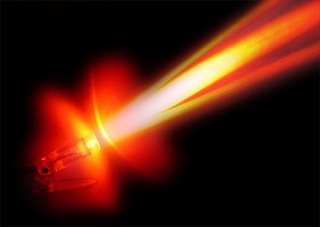


|

|
|
|
Home |
The Mil & Aero Blog
 Posted by John Keller When the smoke cleared after the American Civil War, many an army veteran on both sides made his way home while missing a hand, an arm, or a leg. It was the logical byproduct of weapons technology of the day, before metal-jacketed ammunition had been invented. The standard .58 caliber Springfield musket fired a bullet of soft lead weighing an ounce and a half. It hit with tremendous kinetic force, started flattening out when it met resistance, and splintered bone beyond repair with grisly efficiency. Look at the postwar photographs, and you'll see many crutches and empty sleeves. The prosthesis industry -- artificial limbs -- got a big boost after the war (I almost wrote 'got a shot in the arm,' but that would be a poor choice of words) as former soldiers maimed in the war sought to live normal lives. I've often thought that veterans of future advanced-technology wars might head home with arms and legs largely intact, but suffering from blindness in large numbers. This condition, too, might be the logical byproduct of future optical warfare where battlefield lasers play a huge role. U.S. military researchers are trying to develop a portable high-power laser known as the "laser crazer" that uses terawatt-class lasers fired in extremely short pulses that are designed to pit and scratch glass lenses in missile seekers, night-vision equipment, and other optical systems to destroy system effectiveness, reports Wired magazine in a story by David Hambling entitled Camera Shy? Pentagon Builds a Portable Lens-Destroying Laser. Reports Wired: ... the so-called "laser crazer" is designed not to burn up missiles or tanks, but to scratch lenses. It's a portable nonlethal weapon designed to take out enemy optical systems at long range -- ruining an adversary's night-vision gear, sniper scopes and binoculars in a fraction of a second -- by sandblasting their lenses with ultrashort pulses of laser light. Hambling expands on his story in an item on Wired's Danger Room Blog entitled New Sensor-Blasting Laser: Blinding Brilliance? by speculating that laser crazer technology might be used to blind -- not confuse, but blind -- air-to-air and surface-to-air heat-seeking missiles. This technology is quite destructive to the glass lenses of optical devices. According to Hambling it "has a peak power of more than a million megawatts, so intense that it warps the air around it. When the beam strikes the target it vaporises the impact site, producing a plasma fireball and a highly destructive shockwave. The end result: a tiny crater barely visible to the naked eye." It's not lost on me that the naked eye also is an optical lens of sorts. Imagine what a laser crazer would do to the human eye. Now visualize the blind coming back from war. It's not much of a leap. << Home |
Welcome to the lighter side of Military & Aerospace Electronics. This is where our staff recount tales of the strange, the weird, and the otherwise offbeat. We could put news here, but we have the rest of our Website for that. Enjoy our scribblings, and feel free to add your own opinions. You might also get to know us in the process. Proceed at your own risk. 
John Keller is editor-in-chief of Military & Aerospace Electronics magazine, which provides extensive coverage and analysis of enabling electronic and optoelectronic technologies in military, space, and commercial aviation applications. A member of the Military & Aerospace Electronics staff since the magazine's founding in 1989, Mr. Keller took over as chief editor in 1995.  Courtney E. Howard is senior editor of Military & Aerospace Electronics magazine. She is responsible for writing news stories and feature articles for the print publication, as well as composing daily news for the magazine's Website and assembling the weekly electronic newsletter. Her features have appeared in such high-tech trade publications as Military & Aerospace Electronics, Computer Graphics World, Electronic Publishing, Small Times, and The Audio Amateur.
Courtney E. Howard is senior editor of Military & Aerospace Electronics magazine. She is responsible for writing news stories and feature articles for the print publication, as well as composing daily news for the magazine's Website and assembling the weekly electronic newsletter. Her features have appeared in such high-tech trade publications as Military & Aerospace Electronics, Computer Graphics World, Electronic Publishing, Small Times, and The Audio Amateur.
 John McHale is executive editor of Military & Aerospace Electronics magazine, where he has been covering the defense Industry for more than dozen years. During that time he also led PennWell's launches of magazines and shows on homeland security and a defense publication and website in Europe. Mr. McHale has served as chairman of the Military & Aerospace Electronics Forum and its Advisory Council since 2004. He lives in Boston with his golf clubs.
John McHale is executive editor of Military & Aerospace Electronics magazine, where he has been covering the defense Industry for more than dozen years. During that time he also led PennWell's launches of magazines and shows on homeland security and a defense publication and website in Europe. Mr. McHale has served as chairman of the Military & Aerospace Electronics Forum and its Advisory Council since 2004. He lives in Boston with his golf clubs.
Previous Posts
Archives
|
|||||
Online treasures
THE MAE WEBSITE AUTHORS ARE SOLELY RESPONSIBLE FOR THE CONTENT AND ACCURACY OF THEIR BLOGS, INCLUDING ANY OPINIONS THEY EXPRESS, AND PENNWELL IS NOT RESPONSIBLE FOR AND HEREBY DISCLAIMS ANY AND ALL LIABILITY FOR THE CONTENT, ITS ACCURACY, AND OPINIONS THAT MAY BE CONTAINED HEREIN. THE CONTENT ON THE MAE WEBSITE MAY BE DATED AND PENNWELL IS UNDER NO OBLIGATION TO PROVIDE UPDATES TO THE INFORMATION INCLUDED HEREIN.
|
||||||
|
|
Home | About Us | Contact Us | Corporate Website | Privacy Policy | Courage and Valor Foundation | Site Map
Also Visit: Laser Focus World | Vision Systems Design | Industrial Laser Solutions Copyright © 2007: PennWell Corporation, Tulsa, OK; All Rights Reserved. | Terms & Conditions | Webmaster |
Saturday, January 26, 2008 1:11:00 PM EST